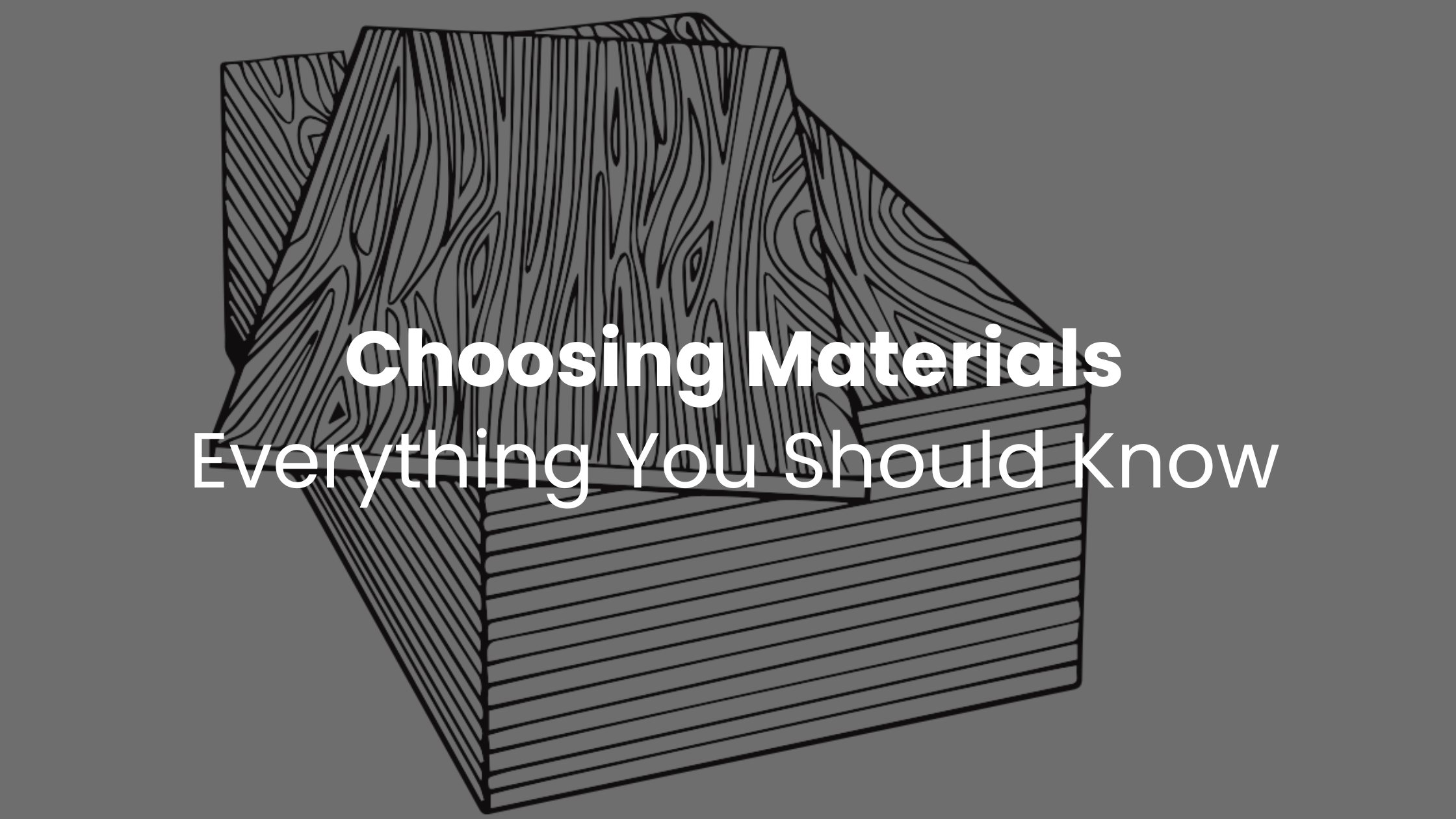When it comes to converting a van into your dream campervan, the materials you choose are as important as the design itself. The right materials can enhance durability, comfort, and functionality, turning your vision into a practical, livable space.
Here, we explore the various materials you might consider and their respective advantages and disadvantages.
Wood
Wood is a natural choice for the interior of a campervan. It’s versatile and can be used in its original form or processed for construction purposes, making it ideal for furniture, reinforcements, and frames. While elements made of PVC or other plastics are options, they are often expensive and challenging to mold in home-workshop conditions.

What Kind of Wood?
Choosing the right type of wood depends on your specific needs and the structure you aim to create. It’s crucial to consider three main factors: material, weight strength, and price.
Raw Wood Planks
Pros: Raw wood is cost-effective, especially if sourced from recycling (e.g., pallets) or purchased from a wood yard. It’s perfect for furniture structures that can be later clad with plywood.
Cons: The weight of solid wood, such as air-dry pine, can be significant. Processing details can be challenging, and there’s a risk of deformation due to moisture.
Plywood
Pros: Plywood is available in various thicknesses (commonly from 3 mm to 22 mm), making it versatile for different applications. It’s durable, moisture-resistant, and easy to process. Hardwood plywood is recommended over pine plywood for better durability.
Cons: It requires finishing for edges and surfaces, and higher-quality plywood can be expensive if not bought wisely. Weight might be a concern for thicker varieties.
Wooden Wall Panels
Pros: Wooden panels are easy to assemble and finish. They come with a smooth texture and can be matched piece by piece, simplifying the installation process.
Cons: The weight of wooden panels can be substantial, and they can be challenging to machine, especially in the transverse direction.
Wood Thickness Selection
Selecting the appropriate wood thickness is crucial for different parts of the van:
Walls: 3 mm or 4 mm plywood is typically used for walls.Here is a table comparing the densities and weights of different wood types:
| Type of Wood | Density (kg/m³) | Density (g/cm³) | Density (lb/ft³) |
|---|---|---|---|
| Aspen | 420 | 0.42 | 26 |
| Hickory | 600-930 | 0.60-0.93 | 37-58 |
| Balsa | 112-144 | 0.11-0.14 | 7-9 |
| Pine | 352-849 | 0.35-0.85 | 22-53 |
| Cedar | 368-577 | 0.37-0.58 | 23-36 |
| Spruce | 400-705 | 0.40-0.71 | 25-44 |
| Oak | 593-897 | 0.59-0.90 | 37-56 |
Using 12 mm plywood for larger, essential parts and 9 mm plywood for smaller details helps balance weight and durability in furniture construction.
Alternative Materials
Beyond wood, there are alternative materials to consider, such as PVC or various plastics. These materials can be useful but may present challenges in terms of cost and feasibility for home workshop conditions.
Composites
Materials like fiberglass or carbon fiber offer lightweight yet sturdy alternatives. They are prized for their high strength-to-weight ratio, making them ideal for applications where weight savings are critical.
Composites can be used for panels, insulation, or interior finishes, enhancing efficiency and performance without compromising durability.
Safety Considerations
When working with wood and other materials, always prioritize safety. Use a dust mask to protect your lungs from fine particles, and wear earmuffs or earplugs to shield your ears from noise. Safety glasses and work gloves are also essential to protect against injuries.
Conclusion
Choosing the right materials is essential for turning your campervan ideas into a real living space. It’s not just about aesthetics; materials impact durability, comfort, and functionality.
Whether you opt for sturdy plywood, insulating foam, or innovative composites, each material plays a crucial role in the overall structure.
By carefully selecting and balancing the qualities of weight, strength, and cost, you can create a campervan interior that is both beautiful and practical.
[ Read More ]


